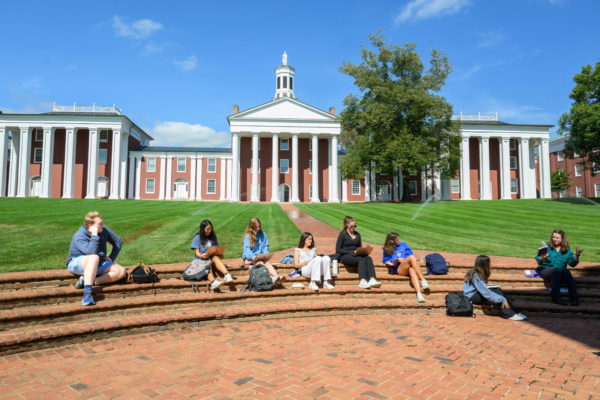Reflections on changed sorority recruitment
January 23, 2016
Washington and Lee is the best campus for Greek life, according to Best College Reviews, so it makes sense that the female students here take sorority rush, both formal and informal, very seriously. Informal recruitment takes place during the fall semester when sorority women get to know the freshmen women as best as they can through classes, extracurriculars, parties and over social media.
Formal recruitment occurs at the start of the winter semester and lasts three nights. During formal recruitment, freshman girls attend parties at each house, six on the first night, four on the second and two on the last. The purpose of the parties is for the freshmen to decide which sorority they like the most and hopefully to receive a bid from at the end of the week. In the past, formal rush has taken place during the first week of the semester when classes are in session. After careful consideration, the Panhellenic Council on campus moved formal rush to the last week of winter break.
There were many benefits to the new formal rush schedule. Perhaps most importantly, formal recruitment no longer interfered with class time or homework. In the past, not only were some sorority girls forced to miss classes to prepare for each night of recruitment, but upperclassmen had very little time to work on homework. Before each night of formal recruitment, there were last minute rehearsals followed by the parties themselves, which lasted for about three hours.
After the parties ended, the sorority women’s night was then dedicated to voting on who would be returning to their houses the next day (voting procedures vary depending on sorority). Voting would often go well past midnight, and considering how exhausted I felt leaving the house at 10 p.m. this year, I can only imagine how tired they must have been in the past. By moving recruitment up a week, the sorority women were able to devote all of their time and efforts toward rush week without worrying about it interfering with school.
One added bonus for the first years with the new rush schedule was that parties occurred earlier in the day, at 2 p.m. instead of at 5 or 6 p.m. Although this is only a four hour difference, because rush takes place in the winter, temperatures drop drastically as the sun sets. Parties in the afternoon allowed the PNMs (potential new members, a.k.a the first years) to stay a little warmer while waiting to enter each sorority house.
The main complaint about the early rush schedule was that it was a week earlier, cutting a week out of our winter break. Depending on when women finished their final exams, between Dec 12-18, they were able to spend at least three weeks at home. This is still a long break, but compared to the men who had the extra week to relax at home or to go on vacation, it might not seem long enough.
Overall, it seems like moving rush up a week was the best choice when compared to other options, such as moving it to reading days or even to the beginning of the school year. No matter how time consuming and stressful recruitment can be for both men and women, it presents great opportunities for students to join national organizations that can open them up to a world of opportunities.












